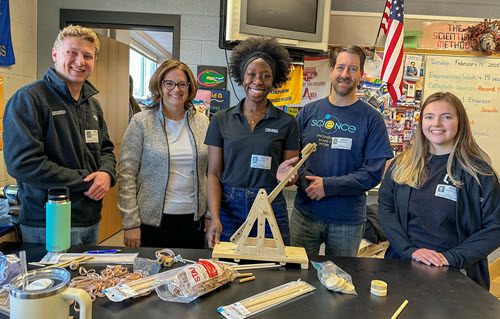
kaboompics / Pixabay
Yesterday, I shared what I have been doing to combat the Trump administration’s attacks on our communities, and how it isn’t anywhere near enough (see How To Respond To Trump’s War On Decency, Social Justice & Equity – Part One In A Series).
Today, I’m going to briefly talk about what I think would be the most effective strategies opponents to Trump can take on a national level- specifically the Democratic Party.
Tomorrow’s post will focus on actions I think we can all do locally to make an impact – including (though not at all exclusively) how people on a local level can pressure national politicians to take some of the actions I share here today.
As I described in yesterday’s post, my perspective is informed by a nineteen year career as a reasonably successful community organizer with the Industrial Areas Foundation. That work preceded my on-going twenty-three year career as a high school teacher.
Here are some ideas for what I think should be happening on the national stage:
- The Democratic Party should create a “shadow cabinet” like many opposition parties do around the world. In other words, a “shadow” Secretary of State, Secretary of Education, etc. These shadow cabinet members should – several days each week – provide a critique of what their official counterparts have done and offer an alternative vision of what they would have done instead (as Saul Alinsky wrote: “The price of a successful attack is a constructive alternative.”)
- I’m not the first person who has suggested that the Democratic Party create this kind of shadow cabinet. However, I think it has to be taken much, much further. Those talking points made by the shadow Secretaries must be made real in local communities. In other words, I think there need to be “under-Secretaries” in as many areas as possible all throughout the United States. These “under-Secretaries” would echo the points made by the members of the Shadow Cabinet and share real stories and examples of how the Trump action being critiqued that day affects their local communities and how an alternative vision would benefit their community.
- National Democratic Party leaders need to take forceful and creative actions to dramatize the damage Trump is doing. I’m not talking about little rallies outside cabinet offices with Chuck Schumer leading chants of “We will win” or feeble attempts to get inside buildings and then stop when one solitary private security officer tells them to do so. They need to be constantly doing creative actions (here in Sacramento once the Secretary of State announced he was auditing all the voter rolls to see if people with Spanish sounding names where undocumented, so we tried to present him with “The Bull Connor Award For Voter Engagement”) and a little civil disobedience never hurt anyone.
- Democrats should do everything possible to slow things down in the Senate and House, and, most importantly, be prepared to shut the government down if they don’t get significant concessions
- The Democratic Party should do a massive, and fast, review to identify organizations that were successful in promoting Democratic voter turn-out around the United States. I will bet dollars to donuts they were not areas where canvassers with no relationship to the area were parachuted in. Instead, I would bet they were much closer to Marshall Ganz’s work for the Obama campaign where local people organized in their communities. This kind of work, which can include “deep canvassing,” needs to funded now, along with targeted expansion to strategic areas. Again, Democratic donors need to put their millions into this kind of work now.
- Lots of commentaries have accurately pointed out that the Trumpists have an effective and ongoing media infrastructure. This can be countered in several ways. One, Democratic leaders should go on as many conservative podcasts and streaming shows as possible and not cede any space to them (and of course, they should go on progressive shows, too). Two, Democrats should set-up a training program to help people who have been directly impacted by the Trump administration’s actions to develop the skills and confidence to tell their stories publicly, and then assist them to share both on legacy media and social media. In addition, the Democratic Party or allied national organizations should set up a “shop” where skilled professionals can prepare videos, etc. of people who are negatively affected by Trump’s actions that sympathizers can share on social media. These stories can include testimonies from people around the world impacted by USAID cuts and other Trump actions. Never underestimate the impact of storytelling.
I’m sure there are many other elements that can be part of an effective national strategy, and these six may not even be be the best ones.
What do you think?
Yesterday, I shared what I have been doing to combat the Trump administration’s attacks on our communities, and how it isn’t anywhere near enough (see How To Respond To Trump’s War On Decency, Social Justice & Equity – Part One In A Series). Today, I’m going to briefly talk about what I think would social studies Larry Ferlazzo’s Websites of the Day…






